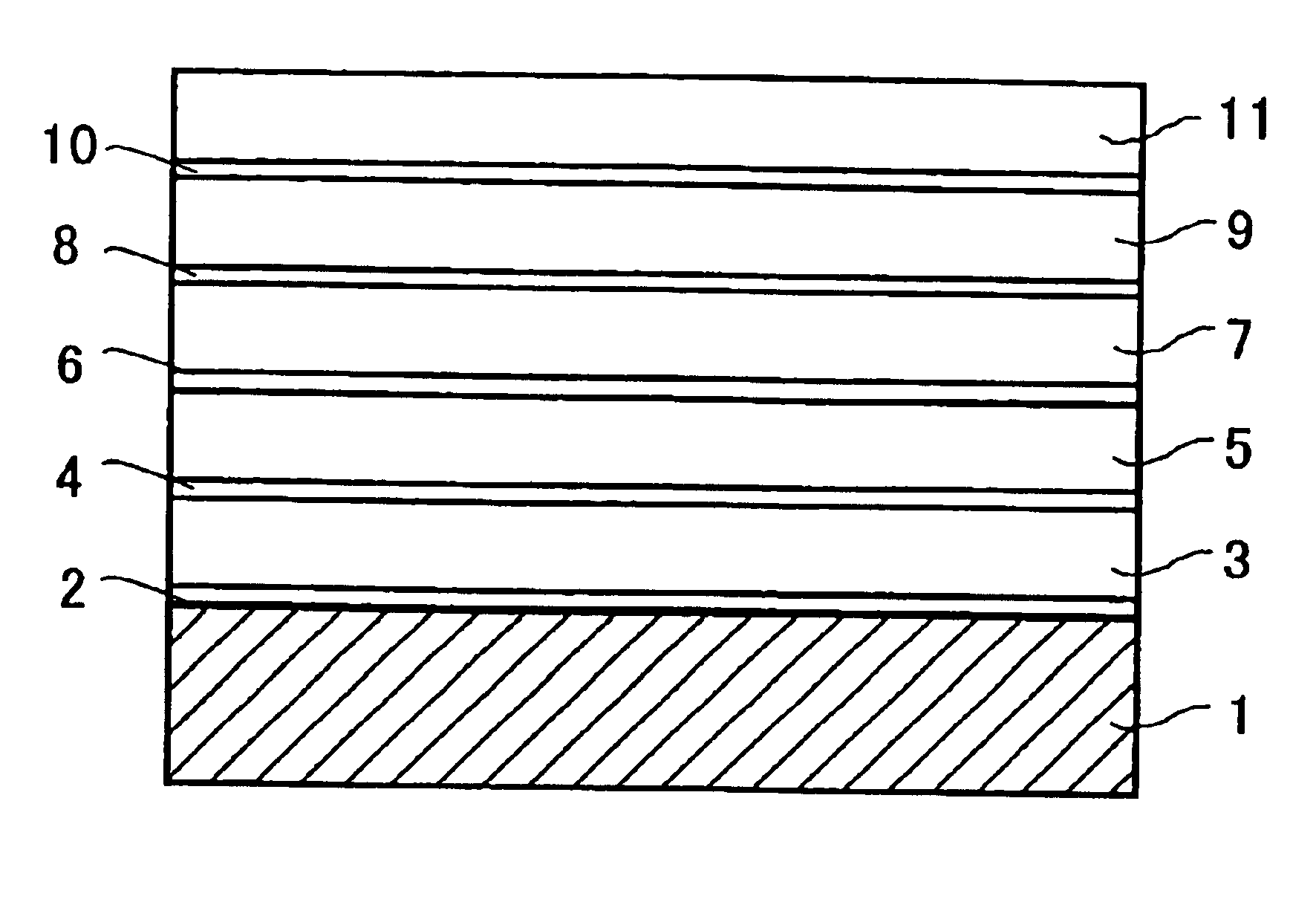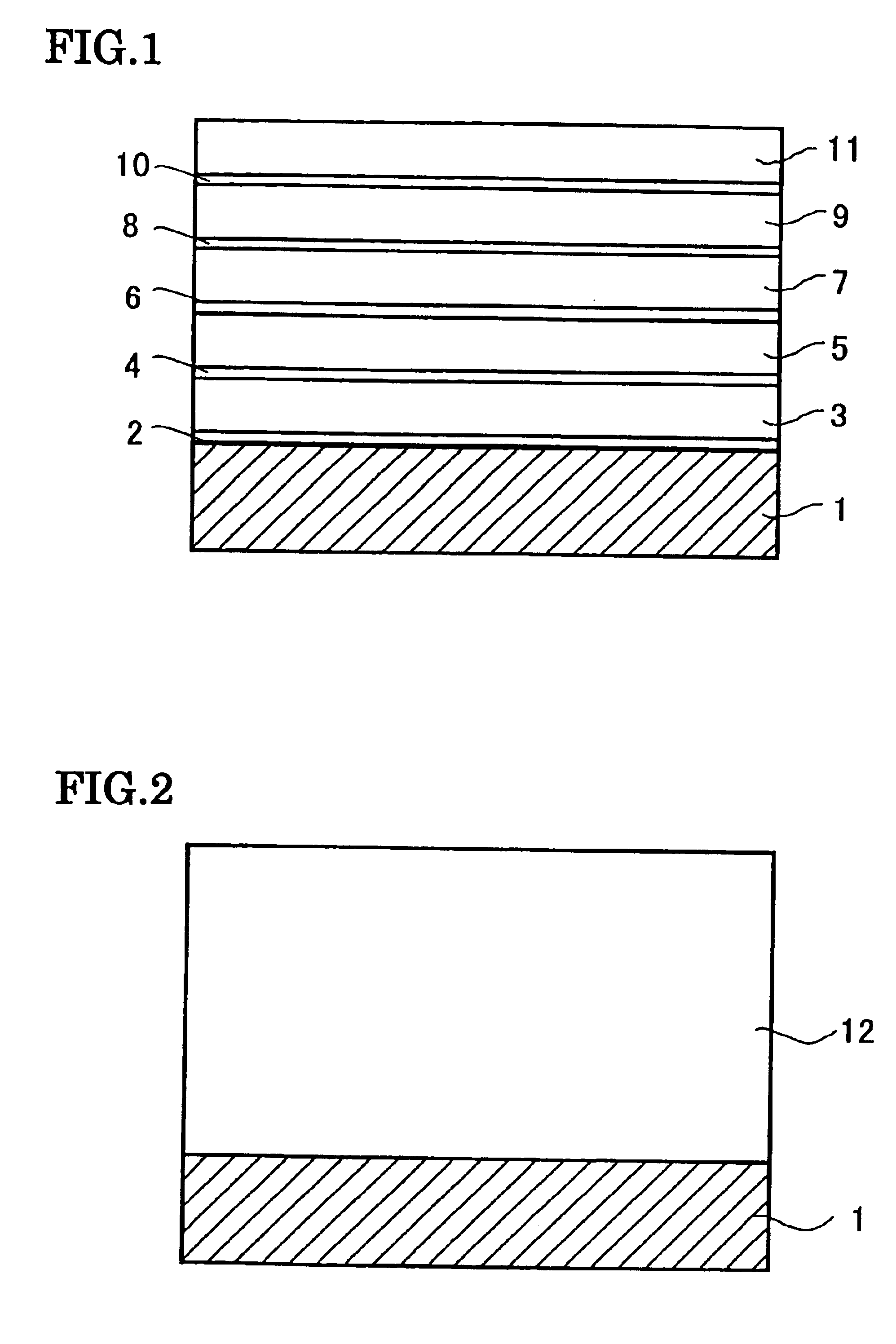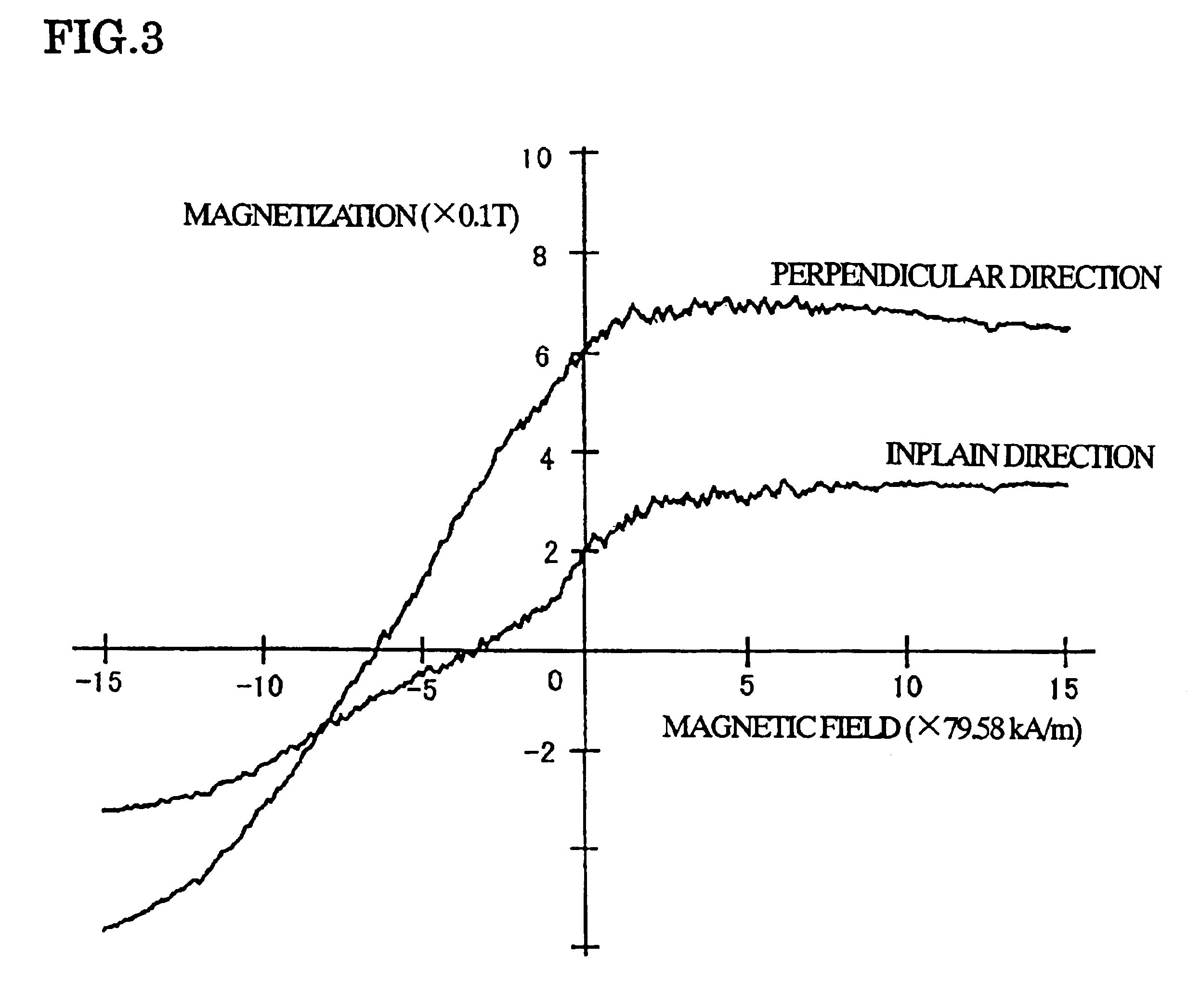Thin permanent-magnet film and process for producing the same
a technology of permanent magnet and film, applied in the field of thin film permanent magnet, can solve the problems of difficult to improve both the magnetization and coercive force simultaneously, the thin film permanent magnet has not been put into practical use, and the improvement of both the magnetization and coercive force is difficult. , to achieve the effect of improving the residual magnetic flux density b.sub.r, increasing the magnetic anisotropy, and improving the coercive for
- Summary
- Abstract
- Description
- Claims
- Application Information
AI Technical Summary
Benefits of technology
Problems solved by technology
Method used
Image
Examples
embodiment 1
In this embodiment, first, on an Al.sub.2 O.sub.3 --TiC ceramic substrate which was heated at 550.degree. C., a plurality of samples in which refractory metal layers consisting of one kind of Ta, Mb, Zr, and Ti layers and Nd--Fe--B alloy layers (rare earth alloy magnetic layers) were alternately deposited were prepared by a DC diode magnetron sputtering apparatus. In this embodiment, for all of the samples, the total thickness of the Nd--Fe--B alloy layers was set to be 1000 nm (200 nm.times.5). The multilayer structure and the magnetic properties in the respective samples are shown in the following Table 1.
TABLE 1 Perpendicular to In-plane the film plan Br1 H.sub.cJ Br2 H.sub.cJ Sample No. Multilayer Structure (T) (kA / m) (T) (kA / m) 1 Comparative example Sub. / Nd--Fe--B (1000 nm) 0.20 263 0.61 509 2 Example of the invention Sub. / [Ti (20 nm) / Nd--Fe--B (200 nm)] .times. 5 0.25 422 0.89 844 3 Example of the invention Sub. / [Ta (20 nm) / Nd--Fe--B (200 nm)] .times. 5 0.11 422 0.88 >1194 4 E...
embodiment 2
In this embodiment, on an Al.sub.2 O.sub.3 --TiC ceramic substrate heated at 550.degree. C., a sample in which five Ta layers each having a thickness of 20 nm and five Pr--Fe--B alloy layers each having a thickness of 200 nm were alternately deposited, and a sample in which only a Pr--Fe--B alloy layer having a thickness of 1000 nm was formed by a DC diode magnetron sputtering apparatus were prepared. For respective samples, the multilayer structures and the magnetic properties are shown in the following Table 2.
TABLE 2 Perpendicular to In-plane the film plan Br1 H.sub.cJ Br2 H.sub.cJ Sample No. Multilayer Structure (T) (kA / m) (T) (kA / m) 14 Comparative example Sub. / Pr--Fe--B (1000 nm) 0.21 231 0.65 485 15 Example of the invention Sub. / [Ta (20 nm) / Pr--Fe--B (200 nm)] .times. 5 0.16 478 0.83 >1194
In the table, Sample No. 15 is an example of the present invention and Sample No. 14 is a comparative example.
For the deposition of the Ta layer, pure metal target was used. The deposition wa...
embodiment 3
In this embodiment, on an Al.sub.2 O.sub.3 --TiC ceramic substrate cooled by water, a sample in which five Ta layers each having a thickness of 20 nm and five Nd--Fe--B alloy layers each having a thickness of 200 nm were alternately deposited, and a sample in which only an Nd--Fe--B alloy layer having a thickness of 1000 nm was formed, by a DC diode sputtering method were prepared. For respective samples, the multilayer structures and the annealing conditions are shown in the following Table 3.
TABLE 3 Perpendicular to In-plane the film plan Br1 H.sub.cJ Br2 H.sub.cJ Sample No. Multilayer Structure (T) (kA / m) (T) (kA / m) 14 Comparative example Sub. / Pr--Fe--B (1000 nm) 0.21 231 0.65 485 15 Example of the invention Sub. / [Ta (20 nm) / Pr--Fe--B (200 nm)] .times. 5 0.16 478 0.83 >1194
In the table, Sample No. 17 is an example of the present invention and Sample No. 16 is a comparative example.
For the deposition of the Ta layer, pure metal target was used. The deposition was performed in cond...
PUM
| Property | Measurement | Unit |
|---|---|---|
| thickness | aaaaa | aaaaa |
| thickness | aaaaa | aaaaa |
| thickness | aaaaa | aaaaa |
Abstract
Description
Claims
Application Information
 Login to View More
Login to View More - R&D
- Intellectual Property
- Life Sciences
- Materials
- Tech Scout
- Unparalleled Data Quality
- Higher Quality Content
- 60% Fewer Hallucinations
Browse by: Latest US Patents, China's latest patents, Technical Efficacy Thesaurus, Application Domain, Technology Topic, Popular Technical Reports.
© 2025 PatSnap. All rights reserved.Legal|Privacy policy|Modern Slavery Act Transparency Statement|Sitemap|About US| Contact US: help@patsnap.com



